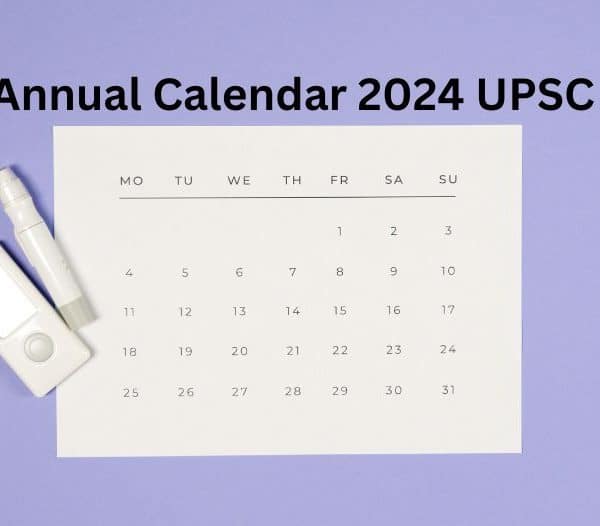The Indian Administrative Service (IAS) is one of the most sought after jobs in India with millions of people applying for it and trying to clear their UPSC exams to get in. Everyone who appears for this exam is also curious about life as an IAS officer and what exactly the job entails. However, an Indian Administrative Service officer’s job is one of the most strenuous jobs in the country as well. They have to carry the weight of the public on their shoulders and that is no easy thing to do.
Everyday Life of an IAS Officer
After successfully clearing their UPSC exams, candidates chosen for Indian Administrative Service are taken to Lal Bahadur Shastri National Academy of Administration (LBSNAA) for their training. Life as an IAS officer is very exhausting but still fulfilling. They are expected to live a very disciplined life and follow a proper schedule. They all get up at 6 am and have a set 60 minutes time span to do their morning exercises or train in horse riding.
Then they have free time for their individual morning activities from 7 am to 9 am after which their numerous classes start. The classes for IAS officers are for 9-10 hours and consist of lectures, sports, and extracurricular activities. Then they are left to socialize and get ready for another day of grueling work.
This schedule can change as per the trainees’ allotted post afterward with specialized activities for their field. The fieldwork for Indian Administrative Service officers starts from 9 am every day and they have multiple kinds of tasks to perform every day such as daily reports, surveillance tasks, reviewing development implementation projects, and meetings for different fields and work.
Also Read: Salary of an IAS Officer: How Much you can Earn per Month after Clearing the UPSC Exam
Role of an IAS Officer
The roles of IAS officers depend on the type of duties they are assigned. They are given three types of tasks:
- Field
- State Secretariat/Public Sector Undertakings
- Central Secretariat
Field assignments are considered to be the most difficult roles an IAS officer can be asked to perform. Civil Services ‘ core functions are as follows:
- Government affairs are handled, including policy framing, implementation, and review.
- Consultation for the above functions with various departments and elected representatives.
- Management and payment of various allocated public funds for various schemes.
- Supervising the implementation of different government schemes and policies.
- Respond and coordinate relief operations in response to emergencies such as natural disasters, major accidents, and riots.
Also Read : What is the Minimum Age to be a Member of Rajya Sabha? Guide on Rajya Sabha for UPSC
An IAS Officer’s Career Paths
The following are IAS officers ‘ career paths that trainees are promoted to after promotion and probation according to their cadre.
- Phase I training at LBSNAA
- Training at the district level in the allotted cadre
- Phase II training at LBSNAA which includes a week-long foreign attachment with one of India’s diplomatic missions abroad
- Central Government attachment at the nominal position of an Assistant Secretary for three months
- Posting as SDM/Joint Magistrate/ Sub Collector
- Posting as Municipal Commissioner, DDO/ CDO
- Posting as DM/ Collector
- Posting at State Secretariats at Director/Joint Secretary level.
- Deputation to the Central Government can be opted for during any stage of service after serving for a few years.
- Principal/ Additional Secretary in the State Secretariat/ Central Secretariat
- Chief Secretary of a state
- Cabinet Secretary
Powers that IAS Officers Have
Along with the numerous duties comes the numerous powers that are divested to these administrative magistrates to aid them along their path to serve the public.
- Code of Criminal Procedure (1973): Sections 107,108,109,110,133,144 and 176 mentions all the powers granted to the magistrates to aid them in maintaining law and order.
- Tenancy laws define a collector’s income powers
- The National Disaster Management Act talks of the powers of Chief Secretaries and Magistrates in directing major scale disaster relief and management operations.
- Arms Act, Drug Licenses Act, Essential Commodities Act, etc. list the powers of IAS officers to enforce regulations and policies in situations where such a need arises.
These are the main laws dealing with IAS officers’ powers. These rules were later summarized and compressed to be put in the All India Service Manuals, which the Department of Personnel and Training updates from frequently with changing times and policies. The service manuals also list the rules that control IAS officers’ performance so as not to give them absolute power and free reign. All civil servants are accountable to the Legislature, be it the state or the central government.
Salary of an IAS Officer
The basic salary of an IAS officer starts at INR 56,100. But, in an IAS officer’s life there is a lot of scope for promotions and an increase in pay as the Indian Administrative Service has an 18 level strata with the Chief Secretary being at the apex with the maximum salary of INR 2,50,000. IAS officers, like other civil servants also get a lot of privileges such as discounted prices, free stay at government property and free trips, etc.
Conclusion
Even today there are small remote alleys and people at dead ends of the society that have urgent needs and need all kinds of government support. That is what the life of an IAS officer is. Indian Administrative Service officers and other civil servants are the ones responsible for bringing help to every person in need. The responsibility vested upon these officers is dire and it is important to become a person who has the talents to do this and is ready to take up this task. You too can become such a person if you relentlessly work hard towards it. Scoring well in the UPSC exams is the way to do this.
Also Read : Term of Rajya Sabha Member: Here’s All You Need to Know about Rajya Sabha for UPSC IAS






